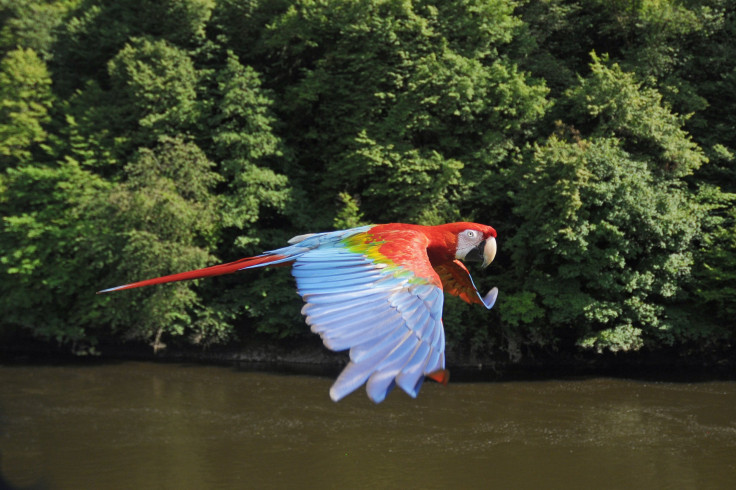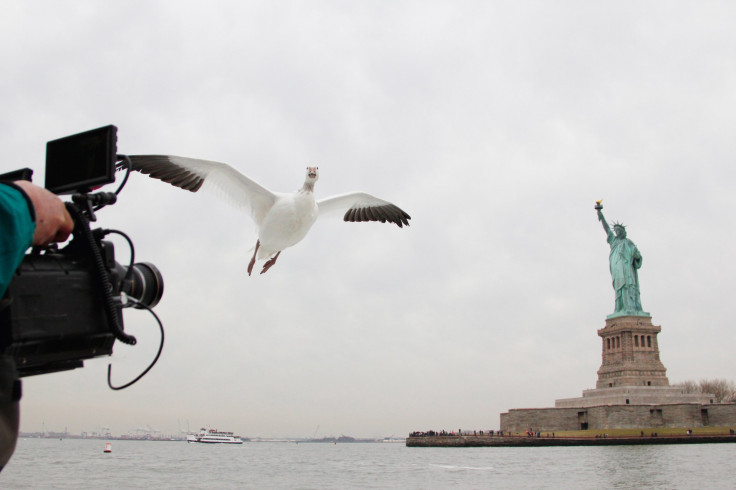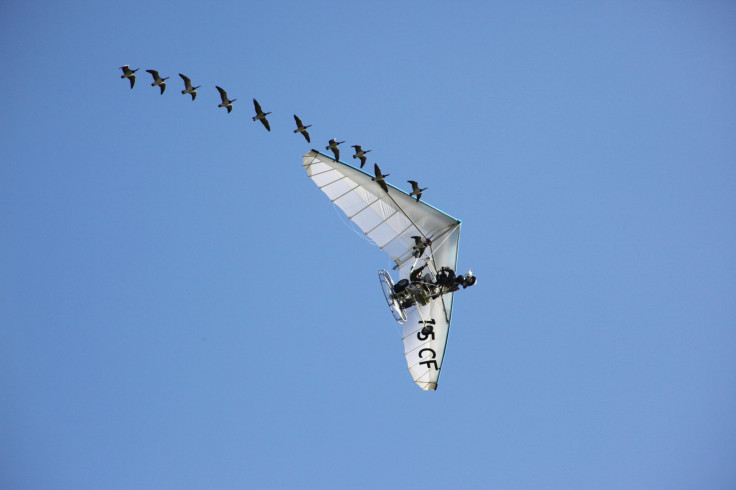'Wings 3D' Director John Downer Discusses The Exciting Time For Wildlife Filmmakers
John Downer has spent more than 30 years working as a wildlife documentary director and producer. Most recently, he revisited his "Earthflight" series to create "Wings 3D" and the director sat down with the International Business Times to discuss making the documentary and what it took to bring the flim to life.
As part of a double feature, BBC Worldwide and Fathom Events will air a special cut of "Doctor Who: Rise of the Cybermen/The Age of Steel" and "Wings 3D" over two nights. David Tennant stars in the two "Doctor Who" episodes and also narrates "Wings 3D." Fans who purchase tickets can watch the two-part "Doctor Who" episode, featuring bonus content, on Monday and return to theaters to watch "Wings 3D" on Tuesday.
Speaking to Downer, the director said it took six years to film "Earthlife" and "Wings 3D." The shoot was unique as his crew would shoot in 2D and 3D and also return to certain events to shoot in 3D.
Downer said, "What we did was look at the early material, stuff which really excited us, and said, ‘This is really quite special,’ and decided that was the story we were going to tell in 3D. When you’re shooting in 3D, it’s a whole different thing again, so the only stuff we did on the bigger series was to shoot those events we knew were impossible to repeat. Mostly, those were when we were flying with birds across Venice or New York and so we filmed them in 2D as well as 3D."

IBT: How much did the technology change over the course of six years?
Downer: That almost had to be built into the whole thing because when we first started on the series, we couldn’t even shoot in digital in high speed. That’s the time shift that we’re talking about and our first shoot was on 35mm. We knew the technology was coming, we didn’t know at what rate but there were certain things we would hold back and not do. Stuff like cameras on the backs of birds because the cameras had to get smaller and smaller. We would just have to wait until that moment came and we’d say, "We can do it and the quality will be good enough and it’s all going to be HD, it’s all going to look wonderful."
Each month there were developments coming and you start saying, "Yeah, that’s the one and we can commit to that and use it."

IBT: How much time do you have to prep the new technology for a shoot?
Downer: What always happens, no matter what, is you have this ambition to have it all tested before you go out and you’re still making it the night before, the plane’s about to leave and is it going to make the plane? When we have had time to test stuff, you test it on the bench and it works perfectly and then you go out on the field and it does not work at all.
What we try to do is, particularly if it is a shoot we’re going to go back on, is a test shoot where we try to get as much as we can of the behavior but maybe not everything we wished for, see what’s working and how to improve it. No matter how successful, you always come back going, "We should have done this" or "We should have done that."
What’s so wonderful about this point in filmmaking, particularly in wildlife filmmaking, is that we’re in an incredible place where stuff is coming that’s so amazing and so small and every month that goes by there’s something else that solves this problem or that problem.
IBT: What excited you most about "Wings 3D"?
Downer: For “Wings 3D,” the big thing for me was the fact we could shoot in 3D. Since I had started making films, that was always the dream. I wanted to capture what it was like to be in the animal world and you could only take it so far. You can get these immersive techniques, such as wide angle lenses close to animals, but there’s that dimension that’s still missing and now 3D makes that possible.

“Wings 3D” has stuff that still takes my breath away. It’s like the first time you ever go up in the air with a bird and flying with it, I mean it is wingtip-to-wingtip because it’s imprinted on you, it wants to be with you. That, I think, is one of the most amazing experiences I’ve ever had. With “Wings 3D,” it’s that extra dimension where a wing will come out of the screen at you; it feels that real. You feel like you could reach out and touch it and that’s the experience you get when you’re flying with the birds.
If you let the animals tell you what the story is, you’re on to a winner.
IBT: What suprised you most shooting "Wings 3D?"
Downer: What was most gratifying was some of the things which we got for the first time in 2D we thought, “Will we ever repeat it?” but each time we went back it was better. It was very weird as that never happens. We went back to the scene with the flying rays, these fish which leap out of the ocean and never filmed before, we never thought we’d get it in 2D, and we got it, and we went back and it was even better the second time. Those incredible flocks of starlings in Rome and in 3D we found a location we did not even know about which was this ancient cemetery where they all arrive to roost.

IBT: As a fan, what can you expect from the 3D experience?
Downer: These huge flocks, you see it as these incredible shapes in 2D and even with your eyes that’s how you see them, but with 3D you get the depth. You can adjust the depth and see layer upon layer and the patterns that are weaving throughout the flock. For me, that was one of the most mind blowing things, was seeing the thrushes because that was not even visible until we put the shots together. It’s the detail that comes out in 3D, it’s the wings and the feathers, all the stuff which is flattened in 2D comes out in 3D.
IBT: What's next for you following "Wings 3D" and "Dolphins - Spy In The Pod" ?
Downer: As part of the Spy brand, we're doing a big five-part series using all these different spy devices. It's taking the spy camera idea but on a bigger, more global scale. It's a bit more like what "Earthflight" did for birds this will do it across the planet. There's very little I could talk about but you can believe we are pushing the boundaries of what the technology can give you!
We're still 2 1/2 years away from finishing the program and we'll know by the end of it what we were imagining what we could do and it'll be 10 times better and that's the excitement of it. It's the rate of development and change is accelerating and I don't think you can be in any other field where you feel things are moving that quickly to aid creativity. It's extraordinary.
The possibilities go on and the subject you can get closer and closer to and it reveals more and more stories. It's neverending. With all these films behind me, the future never looked so amazing because the dream gets closer and closer.
© Copyright IBTimes 2025. All rights reserved.






















